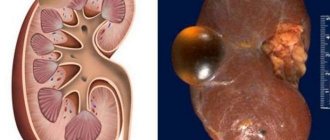Discharge from the genitourinary system is a normal physiological process. However, with the slightest changes in the structure of the discharge, one can assert the presence of some disease in the body. Often such changes are a sign of the onset of thrush.
In medicine, this disease is commonly called candidiasis. This is a fungal disease that can lead to serious consequences if not treated promptly. In order to understand how to cure thrush, you need to know everything about it.
Main reasons
Most often, thrush appears when immunity sharply decreases. This occurs due to stress, recent serious illnesses, or the use of medications that weaken the name system.
Gynecologists identify the following reasons for the formation of candidiasis in women:
- Intestinal infections. Most of the Candida fungi are found in the intestines. If you do not perform certain hygiene procedures after going to the toilet, then the likelihood of contracting thrush increases significantly;
- Hormonal drugs. Hormones control bacteria levels. When using contraceptive medications, hormonal levels decrease, which makes the body less protected;
- Clothes don't fit. Fungal diseases most often occur in those who like to dress tight. People sweat, the skin is moisturized and a favorable environment is created for the growth of bacteria;
- Infections acquired through sexual contact.
In addition to these reasons, those who do not take care of their hygiene, suffer from diabetes or constantly take strong antibiotics are at high risk of contracting candidiasis.
https://youtu.be/cYYRjNSsu30
What kind of discharge occurs with thrush?
You can tell that a woman is infected with candidiasis by the nature of her discharge.
So, you can confidently talk about the presence of thrush in the body if the discharge:
- Abundant, white or cream in color;
- They contain grains resembling cottage cheese crumbs;
- They are odorless;
- When they dry out, they become yellowish in color.
It is important to know that discharge from thrush can be of different shades. The color of the secretion from thrush depends on many factors, the main one of which is the presence of concomitant diseases in the woman’s body.
If a girl has a problem such as cervical erosion, then with candidiasis she may have pink discharge. Candidiasis during pregnancy is also accompanied by copious, pink or light brown discharge.
Cases when a woman has green discharge should be taken with particular seriousness. This situation indicates the presence of an infection that needs to be cured as quickly as possible. If you notice discharge with a greenish tint, you should immediately go to the gynecologist.
Maintaining intimate hygiene
To prevent recurrence of thrush during pregnancy, you need to regularly take tests that reflect the number of Candida fungi on the vaginal mucosa.
Giving birth to a woman with thrush poses a great risk to the health of the fetus. Therefore, in the third trimester of pregnancy, a preventive course of treatment is necessary to eliminate the potential risk of developing the disease and infection of the fetus.
Candidiasis is a common disease among women. Most often, expectant mothers are susceptible to the development of this disease, which is due to the global restructuring of their body. Thrush that progresses during pregnancy is dangerous for the health of the mother and fetus. Timely treatment will eliminate possible complications and save the child’s life.
Read
Also:
- Thrush in early pregnancy: how to treat it
- Treatment of candidiasis: thrush in the first trimester of pregnancy
- Why is cervical erosion dangerous?
- Thrush - psychological causes of the disease in women
Yellow discharge
As you know, yellow discharge is considered normal. However, not everyone knows that only certain shades of yellow indicate the absence of infections in the body.
So, normal discharge looks like this:
- Colorless or light yellow (sometimes painted dark yellow);
- They have no odor;
- Do not cause discomfort (burning and itching);
- When dry, they leave virtually no traces.
Only if all the characteristics of the secretion coincide with those listed above, can we assume that the woman does not have a disease such as candidiasis.
It is worth noting that after menstruation, the discharge may also have a yellowish tint. You can get rid of this in a couple of days with the help of ordinary chamomile. To do this, you need to douche with chamomile decoction in the evenings. It is equally useful to douche with a decoction of calendula.
If a woman has uterine erosion, her normal discharge may have a yellowish tint. This does not mean at all that she is sick with candidiasis or sexually transmitted infections. Such discharge only indicates that she has problems that can lead to the formation of these diseases.
Bright yellow discharge indicates the presence of dangerous sexually transmitted infections. This may also indicate problems with the fallopian tubes or ovaries. Lack of treatment leads to sad consequences, one of which is childlessness.
Color of discharge from thrush
Discharge from candidiasis can be colored in different colors. The color of the discharge depends on what diseases exist or form in the woman’s body.
The most common disease that can be contracted after intimacy with a partner is trichomoniasis. If, in addition to it, a woman is sick with candidiasis, then the secretion takes on a greenish-yellow hue, it is released in the form of foam and is accompanied by a strong odor. In this case, the vaginal area is very itchy and there is a constant burning sensation.
A bright, green color indicates the presence of bacterial vaginosis. This disease can either be transmitted from a sexual partner or be a consequence of lack of hygiene. It is worth noting that if a woman washes herself several times a day, she does not rid herself of infections, but, on the contrary, creates a favorable environment for them. Why? With constant contact with hygiene products, the mucous membranes of the vagina become irritated and become vulnerable. This allows bacteria to easily penetrate inside and begin to actively multiply.
Why is thrush dangerous during pregnancy?
There is an opinion that thrush does not affect pregnancy. This is not true. Absolutely any changes that occur to a pregnant woman affect the fetus and the course of pregnancy. Candidiasis carries the risk of infection of the fetus, especially in the first trimester, as well as during childbirth. The disease can cause a number of complications that can be easily prevented if you start treating thrush immediately after symptoms appear.
Effect on pregnancy
The advanced form of the disease is especially dangerous in the early stages of pregnancy.
Candidiasis has a negative effect on pregnancy, harms the woman’s health, and complicates the course of pregnancy. In the early stages, the infection is especially dangerous, because at this time damage to the uterus can occur, which will lead to miscarriage, especially if the disease progresses rapidly. If thrush is not treated during pregnancy, constant itching has a bad effect on the woman’s mental state and provokes stress, which in turn negatively affects pregnancy and the general condition of the expectant mother. Candidiasis makes childbirth more difficult due to inflammation of the birth canal, and also leads to postpartum inflammation of the uterus. Toxins released by microorganisms poison a woman’s body and lead to unpredictable complications.
How does it affect the fetus?
The consequences of thrush are dangerous for both pregnant women and the fetus, so the woman needs to be cured as soon as possible. The consequences for the child are dangerous, because they affect his intrauterine development and can harm the baby after birth. The main danger consists of the following manifestations:
- A progressive infection can spread to the fetus and affect the skin, mucous membranes and even the internal organs of the child.
- The first month of pregnancy is especially dangerous for the fetus, because it is not protected at this time. Infection of the fetus at such an early stage disrupts intrauterine development.
- Thrush leads to hypoxia (oxygen starvation) of the unborn child. This is fraught with disruption of the formation of internal organs.
- Due to candidiasis, the baby will be born with a small birth weight.
- Natural childbirth and cesarean section equally threaten the baby with infection.
- Infection of a child during childbirth leads to damage to the mucous membrane of the mouth, nose, and eyes. As a result, the baby becomes capricious, eats poorly and may go blind. Infection of a premature baby leads to his death.
Bloody discharge due to thrush
If a woman suffering from candidiasis notices bleeding, this may mean the following:
- The genitals are damaged. Thrush cannot occur without consequences. Thus, the mucous membranes of the vagina become easily vulnerable to various injuries and infections. It is very easy to get injured during sexual intercourse, during a gynecological examination or simply washing your face, which will result in bleeding;
- Infections. Discharge from thrush in women who suffer from any infectious diseases may be accompanied by blood clots. This happens when a woman does not pay attention to her problems and gets serious complications;
- Hormonal disbalance. This may be evidenced by short-lived bleeding that periodically appears in girls.
The appearance of blood in secretion, if it is not associated with the onset of menstruation, is a sign of the body that warns of the presence of any problems in a woman that require timely and proper treatment.
Causes
Vaginal candidiasis is an infectious disease, most often caused by the Candida fungus. It is also present in the normal flora of the vagina, but under the influence of certain factors it begins to multiply rapidly and weakens the healthy microflora.
The following are the main factors that contribute to the occurrence of thrush in women during pregnancy:
- Hormonal imbalances. The acidity of the vagina changes, and there is a constant abrupt change in hormones.
- Decreased immunity. It is necessary to increase the body's protective functions through various means: sleep, herbal teas, fresh vegetables and fruits.
- Increased adherence to vaginal hygiene. Frequent use of soap products disrupts the natural microflora of the vagina.
- Intestinal dysbiosis and constipation.
- Eating disorder. Pregnant women very often eat junk food, chocolates, spicy foods, baked goods, citing their situation. Yeasts grow quickly.
- Avitaminosis.
- Cracks in the walls of the vagina that occur during sexual intercourse.
- Synthetic underwear.
It should be noted that if a woman had thrush before pregnancy, it will appear during pregnancy.
Treatment recommendations
In order to restore the normal process of discharge from the genitals, you need to use the following tips:
- Contact a gynecologist to accurately determine the cause of candidiasis;
- Get an approximate treatment plan and strictly follow it;
- Avoid sexual intercourse with the opposite sex during treatment;
- Take necessary medications;
- Carry out genital hygiene daily, but not more than 1-2 times a day;
- Wear comfortable, loose clothing;
- Avoid stress;
- Eat properly.
By following the above rules, you can get rid of such an ailment as thrush in a few days. What kind of discharge will there be in the end? Once a woman is cured, her secretion will be normal, colorless and odorless.
Useful video about STDs during pregnancy
https://youtu.be/1HIEVkAYIQA
During pregnancy, a woman's body undergoes various changes, which in most cases are caused by hormonal changes. Vaginal discharge should not be a concern if it is normal and does not cause discomfort. How to distinguish physiological mucus from pathological? Why does green discharge appear?
Medicines for candidiasis
At the moment, you can find a huge number of remedies that promise quick and harmless treatment for candidiasis. However, you should not self-medicate and it is better to go to a gynecologist and get his advice before going to the pharmacy.
Which medications will help a particular woman can only be understood after examination. The choice of drugs largely depends on the nature and color of the discharge.
Remember, discharge from thrush in women can be brought back to normal, but as soon as positive results appear, in no case should you stop treatment. Untreated thrush may not appear for a long time, while Candida fungi will actively multiply and have a negative effect on the genitals and the body as a whole. This can be avoided if you strictly follow your doctor's instructions and perform genital hygiene daily.
Discharge during thrush can vary. In order to choose the right treatment method, you need to visit a doctor and tell him about the color and nature of the secreted secretion.
Let's start with the fact that thrush should in no way be considered a sexually transmitted disease. Its causative agent is Candida fungi, which are present in the microflora of every person. Until a certain time, they behave quietly, without causing acute manifestations. However, under the influence of certain factors, their number can increase significantly, which changes the natural nature of the discharge. Concomitant clinical symptoms characteristic of fungal infection also appear. What kind of discharge can occur with thrush? Let's talk about this in more detail.
Why does the disease occur?
There may be several provoking reasons:
Decreased immunity
The immune system is a kind of armor that protects the human body from the aggression of pathogenic viruses and bacteria, that is, from the development of a wide variety of diseases. And if this protection is weakened, we become very vulnerable. The reproductive system is no exception. A decrease in general or local immunity can cause pathological proliferation of a fungal infection to occur. Often, relapse of candidiasis occurs during the course of a disease.
A regular weakening of the defenses is observed in the female body at different phases of the cycle. In particular, during menstrual bleeding, as well as shortly before and immediately after menstruation.
Microflora imbalance
Imbalance of vaginal flora is a common provocateur of candidiasis. Such a nuisance can happen for various reasons. One of the main ones is taking a course of antibiotic therapy. Unfortunately, it is not obvious to everyone that such serious treatment should be accompanied by taking medications containing lactobacilli and bifidobacteria.
Hormonal reasons
Very often, the development of candidiasis occurs against the background of hormonal changes. This often happens on the eve of menstruation, when hormonal changes combine with some weakening of the immune system.
Another source of the problem may be taking oral contraceptives. In individual cases, it is quite possible that such a side effect may occur from their use.
Uncomfortable synthetic underwear
Uncomfortable underwear made from synthetic fabric can also provoke the proliferation of the ill-fated fungus. This is especially true if a woman has a tendency to relapse of this disease.
Diabetes
Serious endocrine disorders often lead to the development of thrush. This happens due to an increase in the concentration of sugar in the vaginal secretion and a decrease in acidity levels. All this together creates favorable conditions for the proliferation of the causative agent of candidiasis.
Violation of hygiene rules
Here, both insufficient hygiene and excessive hygiene can cause the same harm. In both cases, an imbalance of the vaginal microflora occurs (an excess of pathogenic microorganisms and a lack of beneficial ones). And any imbalance is a provocateur for the development of diseases.
How does thrush affect the fetus during pregnancy?
Is thrush dangerous during pregnancy? The answer to a complex question lies in the characteristic features of a fungal disease that can harm every person. A pregnant woman does not always suspect dangerous systematic changes in the body before the first symptoms appear:
- severe itching;
- burning when urinating;
- pain in the lower abdomen;
- curdled discharge with a characteristic unpleasant odor;
- inflammation of the mucous membrane.
Manifestations of candidiasis lead not just to constant discomfort, but to stress for a woman during the most exciting period of her life. The nature of yeast mycosis is quite simple - the Candida fungus, which is present in the body of every healthy person, at the moment when negative environmental factors contribute to the penetration of foreign infections and microorganisms, the active growth of the pathogenic fungus begins. If in small quantities such microorganisms are useful for the microflora of the mucous membrane, then their excess leads to the development of protracted candidiasis.
How does thrush affect pregnancy? The connection between fungal disease and pregnancy is not always obvious, but it plays an important role in the formation of the child for nine months. The reasons for the development of thrush or its relapses are not always external. Internal changes, such as shifts in hormone levels, allow the Candida fungus to actively multiply.
How dangerous is thrush during pregnancy for the mother? Although candidiasis does not cause serious complications, inflammatory diseases of the uterus may develop during the postpartum period. Damage to the genital organs and disruption of the vaginal microflora leads to the appearance of ruptures during childbirth, and then adhesions form.
In addition, candidiasis is a potential cause for the occurrence of other infectious diseases of the genitourinary tract. And severe itching from thrush during pregnancy leads to insomnia and irritability in women.
Women who know how dangerous thrush can be for her and her baby during pregnancy try to prevent the development of the disease. You can do this in the following ways:
- protect yourself from various infectious and inflammatory diseases that reduce immunity;
- take multivitamins, and if infected, take natural remedies that strengthen the immune system;
- stop wearing synthetic and tight underwear;
- limit your sugar intake, it is better to use safer saccharin.
You need to know how common thrush negatively affects pregnancy, and not ignore such unpleasant symptoms as itching and curdled discharge. When a woman is pregnant, she must take care of her health.
Causes of the disease
Pregnant women are 2-3 times more likely to get thrush. According to statistics, 75% of cases of the disease in women occur during pregnancy. The reason lies in the fact that during the period of bearing a child, the hormonal background changes greatly. The hormone progesterone is produced in smaller quantities. The acidity of the vagina changes, and immunity decreases.
This happens because a protective mechanism invented by nature is triggered - thanks to it, the woman’s immune system does not perceive the fetus as a foreign body and does not reject it. But unfortunately, it is precisely because of these changes that the disease most often begins, which has negative consequences for the child during perinatal development and after birth.
There are several other reasons that provoke accelerated proliferation of fungal microorganisms and the appearance of candidiasis:
- infections and inflammations;
- tight synthetic underwear;
- microtrauma of the vagina;
- vitamin deficiency and dysbacteriosis;
- failure to comply with personal hygiene rules;
- stressful situations;
- cases of candidiasis before pregnancy.
Symptoms of candidiasis
Basically, the manifestations of the disease during pregnancy do not differ from other women, but against the background of the general condition they can manifest themselves more acutely:
- burning and itching sensation in the vagina;
- discoloration, swelling of the mucous membrane of the outer labia;
- white or yellowish lumpy discharge;
- discomfort when emptying the bladder;
- painful sensations during sexual intercourse;
- characteristic odor from the vagina.
Symptoms may be intense or vague.
Of course, expectant mothers are interested in the question of how thrush affects the fetus. Is thrush dangerous for the unborn baby, and what could be the complications of this disease?
Every expectant mother is concerned about the impact of thrush or another disease on her unborn child and on the ability to bear it normally. What should you pay attention to in order to minimize the risk to both the fetus and the mother? Of course, the main thing is to cure the disease on time and without consequences.
Pregnancy can be different: planned and not so planned. In the first case, the lady carefully prepares for her future “interesting” position, eliminating all risks to the health of both her and the future baby.
But they, just like those women whose plans did not include pregnancy, may encounter signs of candidiasis:
- Unpleasant-smelling, cheesy, whitish discharge;
- Feeling of burning or itching in the vagina;
- Pain during sexual intercourse or urination.
In this case, the problem comes to the fore: does thrush affect how the fetus develops? Is it possible to protect yourself from such stress and avoid developing thrush?
Medical statistics indicate that this disease often plagues pregnant women. This is due to hormonal changes in the body of the expectant mother and decreased immunity. Both of these reasons are associated with conception and the implantation of a fertilized egg into the uterus. In this case, progesterone, which is called the pregnancy hormone, plays an important role. It changes the pH of the vagina to the acidic side, and thereby creates favorable conditions for the development of candida fungi.
Here the body’s immune reactions must come into play and must tame the “raging” microbes. But for the lady, within whom the great mystery of the birth of a new life takes place, the immune system is delicately silent. For the fetus is, in its physiological essence, a foreign element for a woman’s body. After all, it consists half of other people's genes.
So the immune system has to “sleep” a little so that the unborn child will snuggle tightly into the house, where he will have to grow for nine whole months. This is what microorganisms take advantage of, which at this moment feel at ease, since the body’s natural barriers are weakened. If there are various chronic diseases that also divert the immune system, this is an auxiliary factor in the development of candidiasis.
And synthetic underwear, which does not “breathe,” also supports the development of candida. All of these are factors that contribute to the fact that many pregnant women experience thrush.
You can, of course, prevent this if you take care of the following:
- Strengthening immunity;
- Following a diet;
- Following personal hygiene standards;
- Prevention of exacerbation of chronic diseases.
For a normal pregnant woman, it is natural to fear any disease, no matter how “mild” it may seem. First of all, worries prevail: will the fetus suffer?
In order to harm the child, the pathogens must penetrate the uterus, where it develops. But nature took precautions. With the onset of pregnancy, cervical mucus becomes viscous and dense and, like a cork, envelops the cervix, preventing the penetration of various microorganisms ascending through the genital tract of a woman.
In addition to mechanical protection, the cervical plug promotes the formation of immunoglobulin and other substances responsible for the immune response to an infectious attack. Although, there are options when, under the influence of hormones or other factors, the mucus liquefies, and then candida can penetrate the holy of holies of the female body. This happens quite rarely, but such cases are quite dangerous for the child.
The highest likelihood of infection is during childbirth, when the fetus passes through the birth canal infected with Candida. If the newborn is weakened or premature, the consequences of an encounter with hostile microorganisms can be very sad, even fatal.
Therefore, answering the question: “Does thrush have an effect on pregnancy?” You can definitely give a positive answer. To all other “troubles” it should be added that candidiasis can provoke adhesions, which prevents the normal stretching of the uterus as the child grows. Therefore, in any case, we do not delay the treatment of thrush, so as not to be horrified by the consequences later.
Given the increased load on the body of nursing mothers and the changes in hormonal levels after childbirth, there is a high probability of developing thrush. If vaginal candidiasis was present during pregnancy, then manifestations will not take long to occur during breastfeeding. By using suppositories for thrush during lactation, you can effectively and safely cope with this disease for the baby’s health.
A combination of factors such as hormonal changes in the body, stress received during childbirth, excessive use of intimate hygiene products, or, conversely, ignoring hygiene procedures, lead nursing mothers to the development of thrush. When breastfeeding, this disease must be treated, otherwise complications may occur:
- candidiasis of the nipples;
- infection of a child with thrush;
- complete refusal of mothers from breastfeeding.
Nipple candidiasis occurs when personal hygiene rules are not followed. The moist environment created under the breasts during lactation promotes the spread of thrush. The nipples and their areolas become red and shiny, and cracks appear on them. The pain during breastfeeding is so severe that the woman temporarily refuses to feed the baby. The milk changes consistency, and a shooting pain is felt in the chest.
The main symptoms of thrush in women
Women of reproductive age most often suffer from fungal infections of the genitals. How to distinguish the signs of this disease from the symptoms of other intimate diseases?
- The first sign that a woman notices is itching in the vulva area. At first it is insignificant, but as the disease progresses it becomes more and more intense. At the same time, it may be accompanied by a burning sensation when emptying the bladder.
- The next symptom is white discharge that resembles flakes or grains of cottage cheese. At first, they are easily separated from the mucosa without causing damage to the mucous layer. As the disease progresses, the appearance of the secreted secretion changes. The grains are replaced by small films of a gray hue, which are difficult to separate from the mucous membrane, leaving behind areas of ulceration. If a bacterial infection or other inflammation is associated with candidiasis, the color of the discharge due to thrush may vary. They may have a reddish, pink, yellow or yellow-green tint.
- Another striking clinical symptom is the smell of discharge from thrush. The secretion affected by the fungus will smell like lactic acid. If you notice a similar sour smell, it could be thrush.
Causes and symptoms of the disease
According to statistics, 75% of women develop thrush during pregnancy.
Expectant mothers, when planning a pregnancy, are especially sensitive to their health, monitor hygiene, and regularly undergo medical examinations. If a pregnant woman develops thrush, this does not mean that the woman has become infected with it. The main reason for the development of the disease at this time is pregnancy itself, or rather the change in hormonal levels and the decrease in immunity that occurs during this period. As a result, the body becomes especially vulnerable. In addition, thrush in pregnant women occurs for the following reasons:
- chronic diseases and infections;
- excessive hygiene of the genital organs (disturbs the natural microflora of the mucous membrane);
- excessive consumption of sweets, smoked meats, marinades (pregnant women often experience candidiasis, provoked by dietary errors);
- pathologies of the thyroid gland, diabetes mellitus;
- lack of vitamins;
- dysbacteriosis, constipation;
- genital herpes;
- stress;
- uncomfortable, synthetic underwear;
- vaginal injuries;
- infection during sexual intercourse.
Irritation of the mucous membrane causes discomfort during urine excretion.
The main manifestations of the disease are:
- itching that increases after urination, sexual intercourse, or a hot shower;
- pain in the genital area;
- white discharge, similar to cottage cheese with an unpleasant odor;
- swelling of the affected mucous membrane;
- headache, general weakness (in severe cases).
Candidiasis in men
For many, it may be a revelation that candidiasis can also occur in representatives of the stronger half of humanity. The fact is that in the vast majority of cases it is completely asymptomatic, which is explained by the specific structure of the male genital organs.
If we talk about those cases where a fungal infection is accompanied by vivid symptoms, then, as a rule, men are concerned about the following signs:
- Hyperemia and swelling of the glans and foreskin of the penis.
- The appearance on the affected areas of a white coating in the form of grains, reminiscent of cottage cheese flakes.
- Discharge during thrush will have a special sour smell.
- Foci of ulceration with characteristic painful itching may appear.
- A burning sensation when emptying the bladder, which is explained by the penetration of a fungal infection into the urethra. In this case, an increased urge to urinate will probably be recorded.
Candidiasis in girls
Can fungal infection symptoms appear in children? Unfortunately, signs of candidiasis can be observed in girls at a very early age. However, they are somewhat different from the signs of the disease in mature women. If in the latter, Candida fungi affect not only the labia, but also the vagina, then in girls, as a rule, candidiasis vulvitis develops (only the external genitalia are affected). At the same time, in children, curdled discharge also comes with itching and pain during urination. Often girls and young women experience pronounced swelling and redness of the labia, because it is especially difficult for children to endure discomfort in the intimate area and not itch.
Is thrush dangerous for women and fetuses?
The first danger of thrush during pregnancy is a change in the microflora of the vagina, which can become a favorable environment for inflammatory processes and serious diseases. They can seriously harm the pregnant woman’s body, there is a risk of oxygen starvation of the fetus, premature birth and other consequences.
The second danger of thrush during pregnancy is the risk of impact on the fetus. According to statistics, approximately 70% of children become infected with thrush from their mother, not in the womb, but during childbirth. Considering that candidiasis affects not only the genitals, but also rises through the urinary system, reaching the uterus, children who are born via cesarean section are also at risk. Therefore, if thrush is detected during pregnancy, it is better to treat it before birth.
During pregnancy, the consequences of thrush can be even more terrible for the baby. The fungus can affect the skin of a baby, genitals, eyes and respiratory system. All these diseases can cause complications; in severe cases, when babies are born prematurely or with weak immunity, infection can be fatal. Such cases are quite rare, but make you think about treating the disease on time.
Self-medication is dangerous for humans, but during pregnancy it is forbidden to prescribe medications to yourself, including against fungus. Most of them will not help cope with the disease. It all depends on the type of fungus, the presence of a secondary infection, and medications also have contraindications and side effects. The doctor evaluates all this before prescribing a course of therapy for candidiasis. For conscious women, the doctor will tell you whether thrush affects pregnancy and how dangerous the disease is - even at the stage of planning a child. This will help prepare the body for bearing a healthy baby.
What kind of discharge occurs with thrush?
It should be noted that secretion during fungal infection can have different shades. So what kind of discharge is there with thrush besides white, curd-like discharge? What color discharge should you be wary of and what could it mean? Discharge from candidiasis can also be: green, yellow, brownish and even mixed with blood.
Yellow
Yellow discharge with thrush is usually observed if a woman simultaneously develops diseases such as bacterial vaginitis, chlamydia, gonorrhea, and gardenellosis.
Yellow discharge due to thrush
Does thrush happen without discharge?
This question often arises among both women and men. Thrush without cheesy discharge is a rare phenomenon, but it does occur. If there is no heavy discharge, then identifying the disease can be difficult. The absence of clinical symptoms suggests other diseases. In such cases, we are talking about a latent form of the disease. Often this picture is observed with chronic candidiasis. Sometimes the patient only has itching and irritation of the external genitalia. Only laboratory diagnostics will help to recognize the disease in its latent form.
Discharge from thrush in pregnant women
Pregnancy is a very bright period in the life of every woman. Could there be thrush at this wonderful time? Unfortunately, it can. Moreover, this disease during pregnancy remains one of the most common. In the early stages, a fungal infection is activated under the influence of serious hormonal changes and the changes in the pH level of the vagina that occur against this background.
What does thrush look like and how does it manifest itself during the gestational period?
The symptoms of the disease during pregnancy are characterized by the same clinical manifestations: white flakes, irritation of the vulva, burning sensation when going to the toilet, swelling and hyperemia of the tissues.
If you are pregnant and you are concerned about this secretion, then go to the article describing curd discharge during pregnancy to learn about the reasons for the appearance of this symptom and treatment options for the disease. Also, you can see additional photos.
It is especially important to stop the spread of fungal infection when there are only a few weeks left before meeting your baby. This will prevent the baby from becoming infected at the time of birth.
How to properly treat thrush during pregnancy
Most antifungal drugs are prohibited for women who are expecting a child. Therefore, treatment of the disease at this time is very difficult and must be carried out under the strict supervision of a doctor.
For pregnant women, it is best to use topical medications. In some cases, it is also possible to use traditional methods of treatment.
When prescribing treatment, the doctor takes into account the duration of pregnancy, the condition of the mother and fetus, and possible contraindications. And only after that he chooses an acceptable treatment. The most commonly prescribed drugs are those that will not harm the fetus:
- in the early stages, Pimafucin suppositories or the low-toxic drug Natamycin are prescribed;
- after 20 weeks you can already use stronger agents - “Butoconazole” or “Isoconazole”;
- from the second trimester, use “Clotrimazole” in cream or vaginal tablets;
- Terzhinan suppositories are effective and safe for the fetus;
- you can use a soda solution or chamomile decoction for baths and washes;
- before childbirth, if other treatment does not help, use Hexicon suppositories containing Chlorhexidine;
- in the most extreme cases, under the supervision of a doctor, you can take systemic drugs, for example, Fluconazole.
Tags: pregnancy, influence, thrush, child About the author: Admin4ik
« Previous entry
Treatment tactics for thrush
Thrush, especially if it has already become chronic, should be treated using an integrated approach.
The first thing therapy should be aimed at is eliminating characteristic symptoms that cause significant discomfort to the patient. For this purpose, the use of antifungal drugs is proposed. They can be taken orally (capsules), used topically (suppositories, creams, ointments) or combined during therapy.
Often, for this disease, the drug Terzhinan is prescribed, which has proven itself in gynecological practice. It is acceptable to use Terzhinan suppositories during menstruation. Some women are concerned about unusual discharge after Terzhinan. If you have been prescribed this drug, we advise you to read the article at the link, which describes similar cases and explains the reasons for the appearance of unusual secretion.
It is not uncommon for the disease to manifest itself during menstruation. During menstruation, Polygynax suppositories are most effective, since they do not lose effectiveness with heavy discharge.
If a bacterial or viral infection is associated with a fungal infection, the patient is prescribed drugs whose action is aimed at suppressing the identified pathogen.
Next, it is necessary to support the immune system, since symptoms of thrush in women are always observed against the background of a decrease in protective forces. These can be herbal preparations or synthetic immunomodulators - the choice depends on the severity of the disease.
The next step is to restore the vaginal microflora. For this purpose, drugs for oral administration can be used, as well as vaginal suppositories that restore the microflora at the local level.
Find out which suppositories for women's discharge are most often used in gynecological practice.
After treatment for thrush, discharge very quickly returns to its natural physiological state. That is, they become viscous, slimy, translucent or creamy in color. Relief of accompanying manifestations occurs within 2-3 days, and their complete elimination occurs after completing a full course of therapy. If a week has passed after the visit to the doctor, and the symptoms remain the same, then you should return to the medical institution in order to adjust the treatment and undergo additional examination.
If a disease is detected in one of the sexual partners, it is highly advisable for the second one to undergo drug treatment, even if he does not show external signs of trouble.
After thrush, it is extremely important to follow the rules of moderate hygiene, eat a balanced diet (limiting sugar), wear fairly loose underwear made from natural fabrics, and maintain the functioning of the immune system.
If you notice symptoms similar to thrush, do not delay visiting your doctor. This will allow for timely therapy and prevent the disease from becoming chronic. Prevention will help you stay healthy for years to come.











